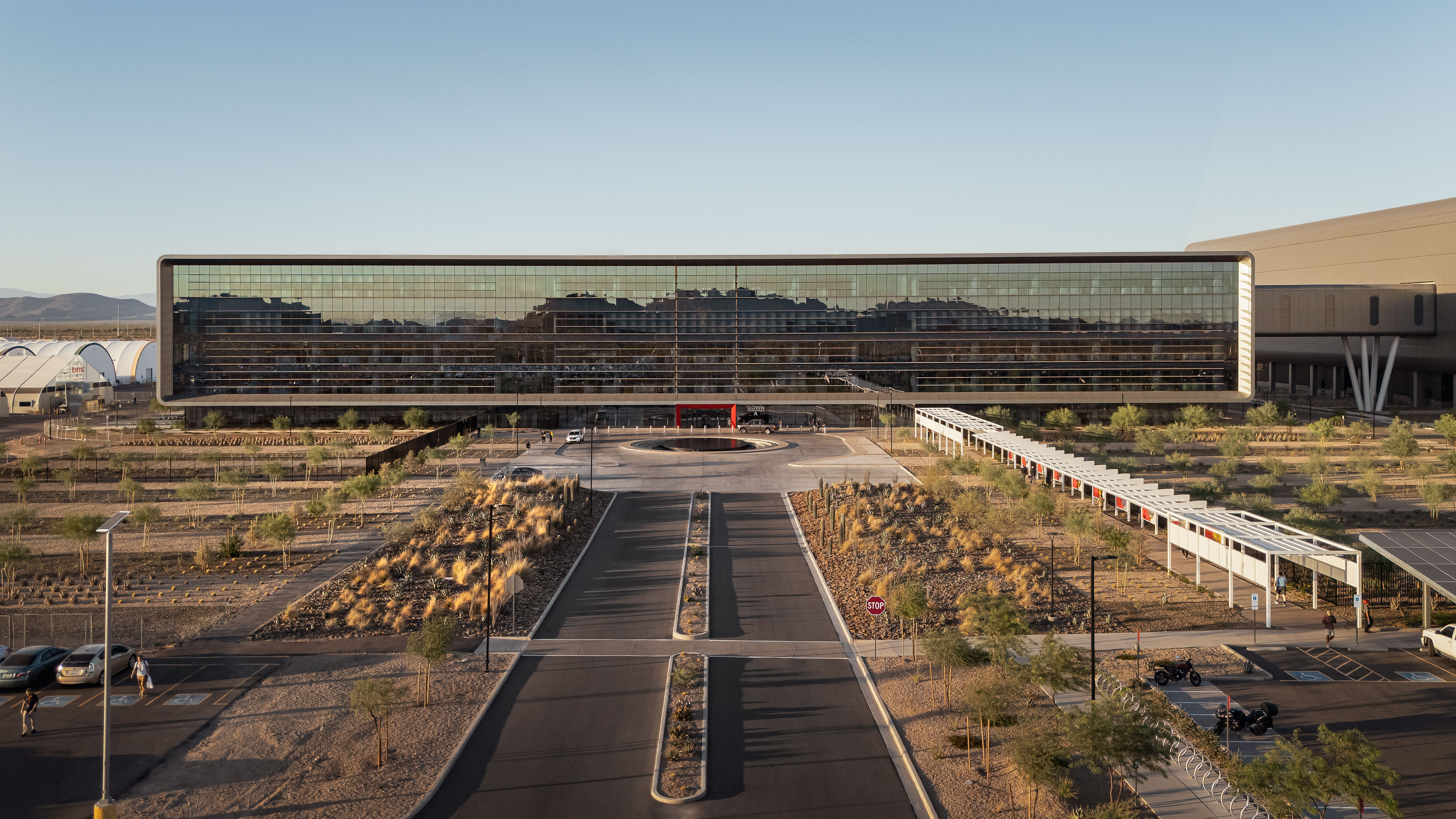TSMC slows down global plans due to soft demand, but accelerates Arizona fab plans by six months for A16 / N2 production

Recent geopolitical developments and shifts in demand are causing TSMC to rebalance its investment strategy. The company has responded to growing pressure from the Trump administration to onshore its manufacturing by accelerating the construction timelines for its upcoming U.S. fabs by as much as six months. Conversely, in other parts of the world, a TSMC fab in Japan is now underperforming, and a second under construction is facing delays. A contracting German auto sector may slow further TSMC investments in Europe, according to a report by Digitimes.
However, while U.S. investment from TSMC is certainly ramping up amidst growing demand for chips, Taiwan remains the company’s heartland, with four of the current nine under-construction new fabrication plants being based in the East-Asian territory. This underlines the continued importance of U.S. strategic initiatives in the region, considering ongoing posturing from the ruling Chinese party about Taiwanese reunification.
More phases, faster
TSMC has been a prolific fab-plant builder and investor in its global operations for years, consistently building multiple new chip manufacturing facilities every year. In 2025, it listed a total of nine new facilities as under construction (though some began in 2024 and others are actually starting operation, rather than starting construction).
The Fab 21 site near Phoenix, Arizona, is listed as two separate facilities, and it will produce different TSMC silicon. The N3 plant is in the equipping phase, while the A16 and N2 process production facility entered construction in April this year. That construction is now expected to accelerate, with TSMC saying it has brought its completion date forward by six months.
As part of this initiative, TSMC is investing a further $100 billion in American fabrication, bringing its total investment into the U.S to a total of $165 billion, which was announced in Early March. These will come online over the next few years, allowing for the US-native production of more advanced process nodes by 2030.
With wafer production prices set to increase dramatically for next-generation process nodes, local production may help keep costs down for TSMC silicon customers with thin margins. However, chips produced at Arizona’s Fab 21 are still expected to command a pricing increase when compared to chips manufactured in Taiwan, though the exact relative price increase isn’t entirely clear.
TSMC runs into issues in Europe and Asia
TSMC’s demand-based investment strategy in the U.S. may see an inverse reflection in other territories, as slowing economies weigh on construction plans. In Japan, TSMC’s Kumamoto Fab 1 facility is struggling to reach production targets since coming online, and local infrastructure and “community impact” have allegedly delayed the construction of its Fab 2 facility. There are rumors, however, that this could be a scapegoat, with TSMC instead concerned about the long-term profitability of such a facility.
In Europe, a slowing auto industry and contracting semiconductor market could mean that TSMC’s facilities there are less attractive for further investment. The German TSMC fab plant was developed as part of a joint venture with Bosch, Infineon, and NXP; however, each of these companies has laid off thousands of workers or announced plans to do so in recent months.
However, that doesn’t mean TSMC is focusing its investments exclusively in the U.S. Indeed, it’s just announced that a new chip design facility will be developed in Munich to help its European customers improve their process technology. However, the company also quashed rumors of a fab based in the UAE, according to CEO C.C. Wei.
Less reliant, but no less involved
Any time TSMC makes investments outside of Taiwan, it raises the specter of Chinese reunification. As a long-term goal of the Chinese ruling party, such a move has the potential to paralyze global silicon and electronic trades, which could be a reason why the U.S. remains committed to supporting TSMC’s expansion into Western territories.
However, TSMC’s diversification and the U.S. government’s drive to be less reliant on Taiwan begs the question of whether this weakens the country’s “silicon shield”. While TSMC has put effort into expanding global operations, particularly in the United States, the slow ramp-up of production (even with the recent investments) means Taiwan will remain crucial to global silicon supply.
Indeed, Taiwanese independence is more strategically important to the U.S. and its allies in more ways than just silicon.
As the Indo-Pacific Studies Center said in its April 2025 report: “As the U.S. reduces reliance on Taiwan’s semiconductors, its defence strategy remains driven by geopolitical imperatives, Indo-Pacific stability, and allied trust. Taiwan’s fall would shift the regional power balance and weaken U.S. credibility with Japan, South Korea, and the Philippines.”
Ultimately, while TSMC’s U.S. fabs will chip away at supply‑chain risk, Taiwan remains and will remain the heart of TSMC investment and global silicon production for the foreseeable future. But that isn’t stopping the company from massively expanding its manufacturing facilities elsewhere in the world, and particularly in America. That will have serious ramifications for chip supply and pricing in the decades to come.
Follow Tom's Hardware on Google News to get our up-to-date news, analysis, and reviews in your feeds. Make sure to click the Follow button.

Jon Martindale is a contributing writer for Tom's Hardware. For the past 20 years, he's been writing about PC components, emerging technologies, and the latest software advances. His deep and broad journalistic experience gives him unique insights into the most exciting technology trends of today and tomorrow.
